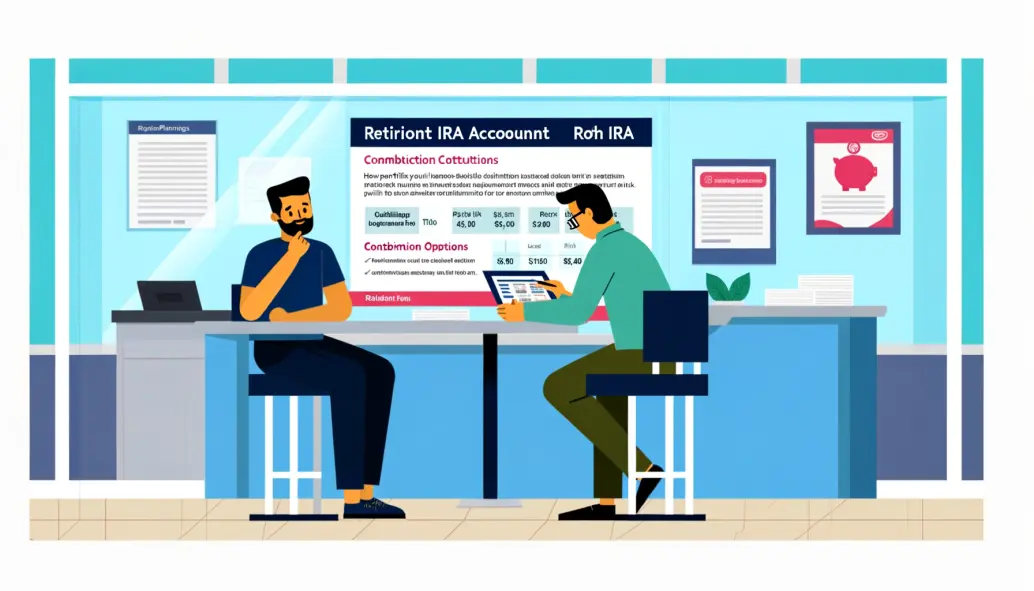Roth IRA Contribution and Income Limits (2024–2025)

A Roth Individual Retirement Account (IRA) is a smart choice for anyone looking to build a financially secure future. Unlike its more traditional counterparts, a Roth IRA is funded with after-tax dollars, meaning you won’t get an upfront tax deduction. But here’s the exciting part: your withdrawals in retirement are completely tax-free.
Roth IRAs can help you build a solid retirement nest egg over time. In this article, you’ll learn how to make the most of Roth IRA income limits and contribution rules, so you can make informed decisions that align perfectly with your long-term financial goals.
Roth IRA Contribution Thresholds for 2024 and 2025

Here are some standout benefits of contributing to a Roth IRA:
- Tax-Free Growth: Your investments grow tax-free — no taxes on capital gains, dividends, or interest earned within the account.
- Tax-Free Withdrawals: Once you retire, all qualified withdrawals from this account in retirement are completely tax-free, offering you a diversified and strategic approach to your retirement income.
- No Required Minimum Distributions (RMDs): Unlike traditional IRAs, Roth IRAs don’t require RMDs during your lifetime. This gives you greater control and flexibility over your retirement planning.
However, contributions to this type of account are subject to specific rules and restrictions stipulated by the IRS. So, to get the most out of this opportunity, you should understand Roth IRA contribution limits that vary depending on your age and filing status.
The maximum contribution limit for individuals under age 50, the maximum contribution is $7,000 in both 2024 and 2025. For those aged 50 and over, the limit is $8,000, which includes a $1,000 catch-up contribution.
Your eligibility to contribute depends on your Modified Adjusted Gross Income (MAGI) and tax filing status, regardless of age. In 2024, the Roth IRA income limit to make a full contribution was less than $146,000 for single filers, and less than $230,000 for joint filers. Looking ahead to 2025, the income limits have been adjusted slightly — single filers can make a full contribution if their MAGI is below $150,000, while joint filers must earn less than $236,000 to qualify for the full amount.
The IRS typically reviews Roth contribution limits annually. The service can adjust them based on changes in the Consumer Price Index (CPI). When inflation occurs, the IRS may increase contribution limits in $500 increments. Yet, these adjustments are not guaranteed every year.
Did you know that nearly one in four US households has Roth IRAs?
Roth IRA Maximum Income Amounts for 2024 and 2025
While your age determines how much you can contribute, your earned income and filing status determine whether you’re eligible.
Roth IRA Income Limits Breakdown:
Here’s a breakdown of Roth income limits for different tax-filing statuses:
Tax-Filing Status | MAGI for 2024 | MAGI for 2025 |
|---|---|---|
Single filer |
|
|
Married filing jointly |
|
|
Married filing separately |
|
|
The phase-out range refers to the income bracket where your ability to contribute gradually decreases until you reach the Roth IRA income limit, beyond which you cannot contribute.
For example, a single filer earning up to $150,000 in 2025 can still contribute the full amount of $7,000 or $8,000, depending on their age (if aged 50+).
Once you go above the income threshold and it exceeds the Roth IRA limit, you’ll no longer be eligible to contribute to this account.
Income Sources That Qualify for Roth IRA Contributions
Even if you’re within the Roth IRA salary limits, not all types of income are eligible for contributions to this savings account. It must be earned income, such as wages, tips, bonuses, or commissions. Income from your own business, as well as military differential pay and taxable alimony, can also qualify for Roth IRA purposes. Meanwhile, income from dividends and interest revenues, Social Security, unemployment benefits, or pensions cannot be contributed to a Roth IRA.
Did you know that over one-third of Roth IRA investors are younger than 40?
Tips on Making Roth IRA Contributions

If you qualify for Roth IRA contributions and meet the income limits, the whole process will take you just a few steps to start contributing for retirement:
- Set up a Roth IRA account with a financial institution such as a bank or brokerage firm.
- Choose your contribution method: You can either make a lump sum deposit or set up regular automatic contributions.
- Fund your account: You can contribute cash or assets, such as stocks, bonds, or mutual funds, as offered by your provider. Just be sure to stay within the contribution limits to avoid penalties (excess contributions can incur a 6% annual penalty).
- Track your contributions throughout the year to ensure you stay under the annual limit.
You can transfer funds between Roth IRA accounts without tax consequences. This type of transfer is done between financial institutions as a direct rollover. However, converting funds from a traditional IRA 401(k) to a Roth IRA requires you to pay income tax on the converted amount.
Remember, you must make your Roth IRA contributions before the annual tax-filing deadline, usually April 15 of the following year. For instance, the deadline to make Roth IRA contributions for the 2025 tax year is April 15, 2026.
Final Thoughts
While Traditional IRA income limits are more lenient when it comes to income, the situation is different with Roth Individual Retirement Accounts. Nearly one-quarter of US households have a Roth IRA, highlighting how popular this retirement savings option has become. Roth IRAs offer tax-free growth, no required minimum distributions, and flexibility that make them a standout choice for forward-thinking savers. By staying informed about the 2025 contribution and income limits, you’re setting yourself up to take full advantage of this powerful retirement planning tool — just like millions of other smart investors across the globe.




